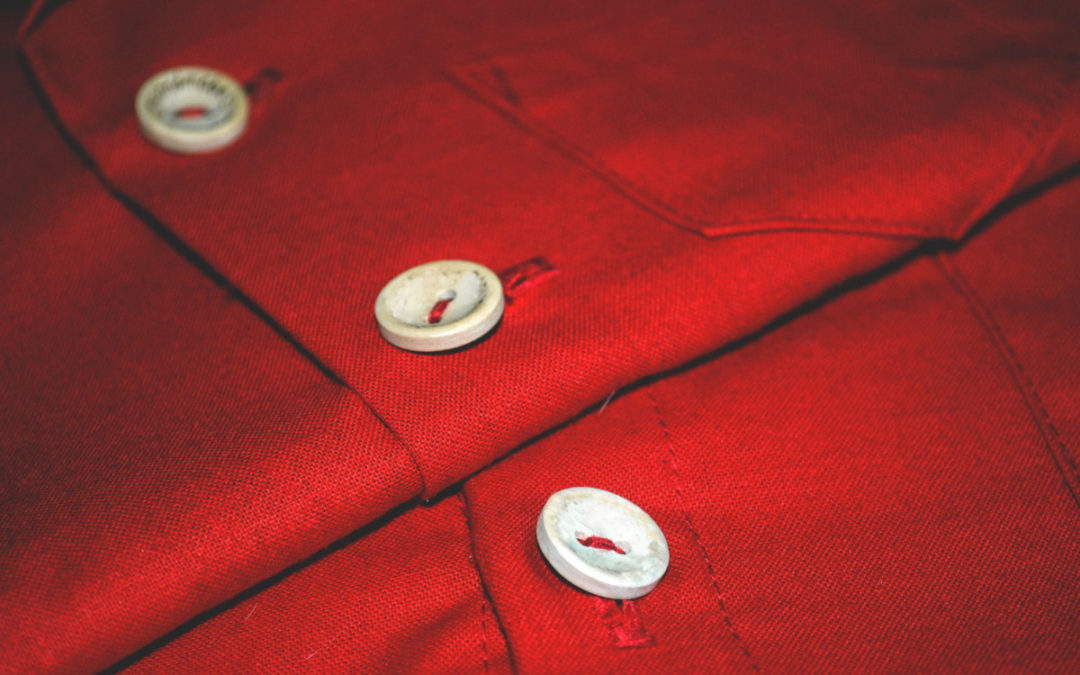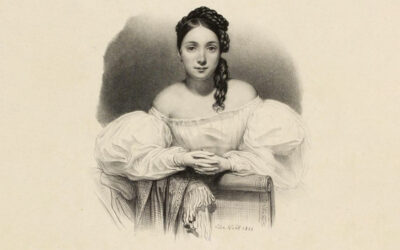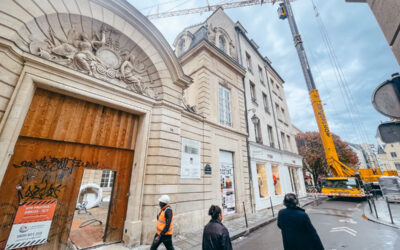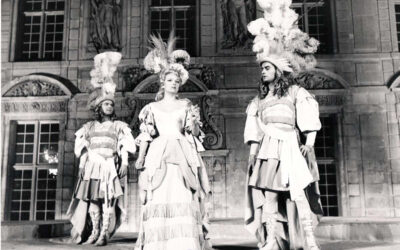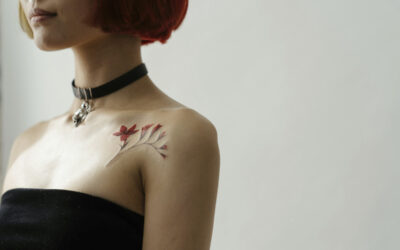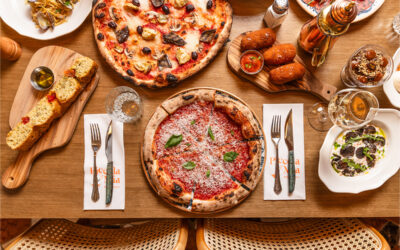The Red Children’s market, in the heart of Haut-Marais, is one of the “spots” of the district, known to both locals and tourists. Everyone flocks there, from Tuesday to Sunday, to do some “shopping” and to eat there – “street food” and “world cuisine” trends combined. But who knows the origin of this strange name, the Red Children?
It all begins in the XNUMXth century, during the Renaissance. At that time, the neighborhood was not yet developed. The streets that intersect at right angles, the private mansions that we still see today do not exist.
Instead, a few houses, gardens and plots of cultivated land are landlocked to the North-East of the capital, “stuck” between the wall which defends the city and that which surrounds the Temple enclosure. It was in this “neglected” area that in 1534 King François I and his sister Marguerite de Navarre ordered the founding of a hospice intended to take in poor children and orphans from the surrounding area.
This pious work is entrusted to religious people who take charge of those who are first called the “God-Children”, then quickly the “Red-Children” because they are adorned, upon their arrival, with a red blouse, easily identifiable (red being associated with charity). The hospital itself occupies a sort of quadrilateral roughly bounded by the current streets of Beauce, Portefoin, des Archives and de Bretagne.
Over time, unfortunately, the hospice declines. The lack of money, the transformation of the district in the XNUMXth century and the “real estate pressure” (already!) led to the fall of the institution. In the XNUMXth century, the vast majority of buildings were sold and some were demolished.
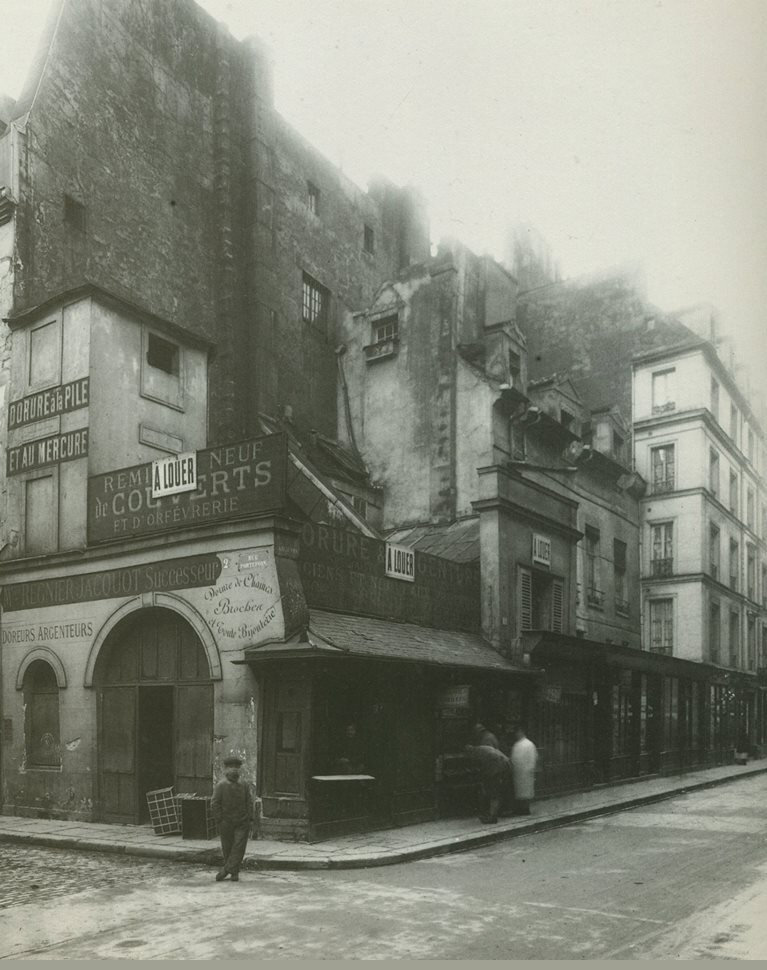
The corner of rue Portefoin (on the left) and rue des Archives, seen towards Square du Temple, in 1916
The church and some annexes, occupied by a small religious congregation, remained in place until the Revolution. In the following century, the extension of rue des Archives between rue Portefoin and rue de Bretagne precipitated the destruction of the last buildings.
However, a few rare vestiges remain of the church and its annexes, visible today at the corner Archives – Portefoin and in the courtyard of the building located at 90 rue des Archives (private property).
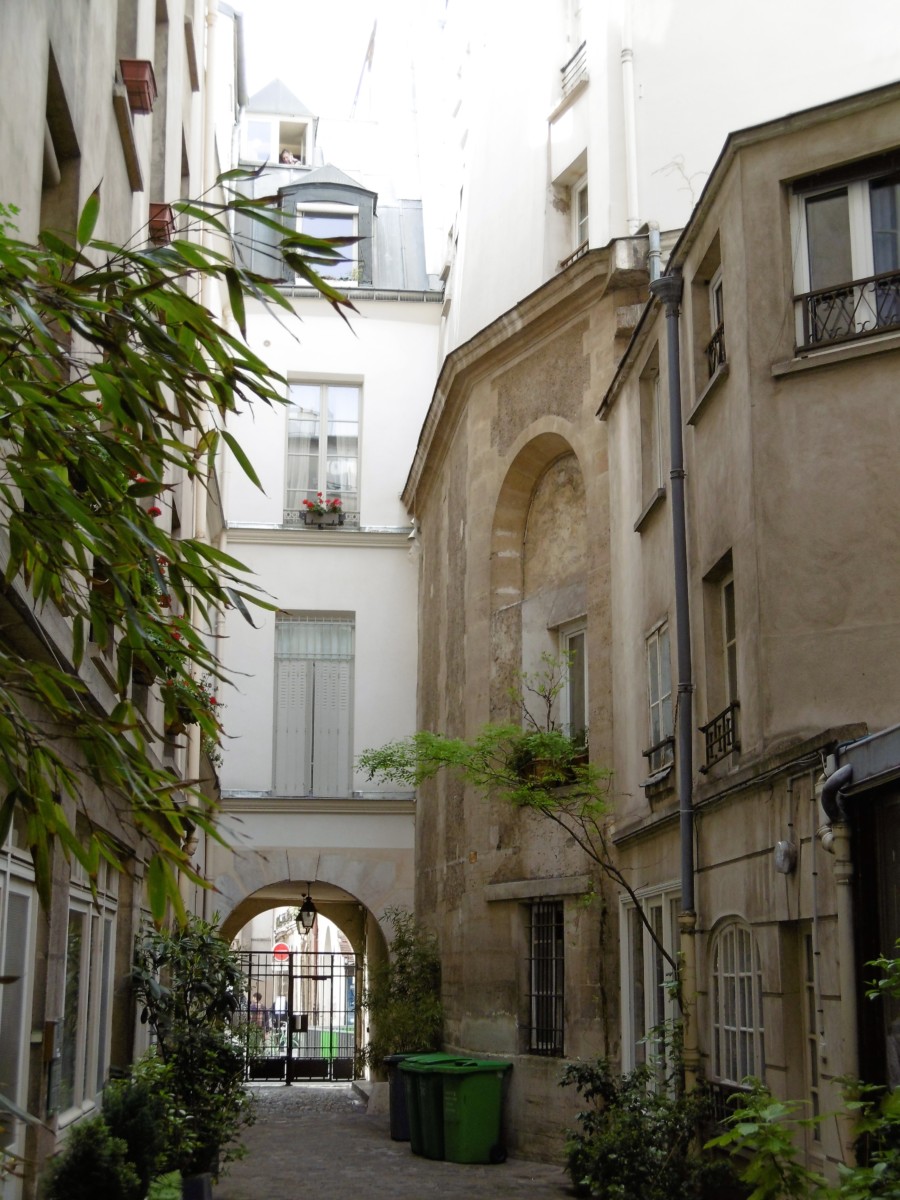
The market, for its part, built between rue de Beauce and rue Charlot, obviously takes its name, by extension, from the immediate proximity of the hospice.
This market was inaugurated in 1615, a period during which the district underwent profound changes (see our article “ The Ghost Square ): new constructions, increase in population, “aristocratization” of Haut-Marais.
First built of wood, a first hall allowed the inhabitants to be supplied with meat and various foodstuffs. Subsequently rebuilt several times “on the ground” by its successive private owners, the market was also enlarged and supplemented with shops and businesses of all kinds.
The city of Paris finally became its owner, a little before the First World War. As the years go by, the fate of the market becomes uncertain. Threatened for a time with destruction, it was finally preserved (and even completely renovated in 1), thus perpetuating, for the future, the memory of the “Enfants-Dieu” of the Marais.
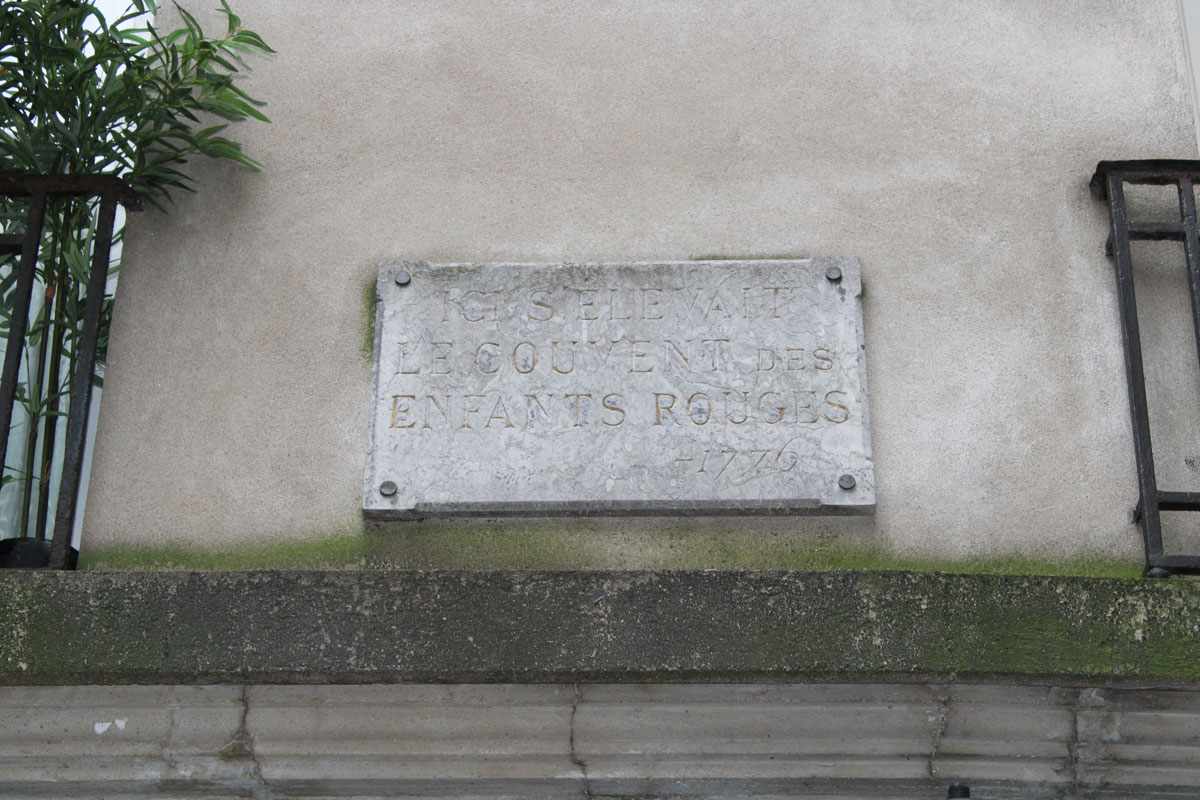
FOR PASSIONATES OFUS
Juliette Drouet actress, muse and mistress of Victor Hugo
At 14 rue Sainte-Anastase, from 1836 to 45 and at 12 from 1845 to 48, a few hundred meters from Place des Vosges, lived the muse and lover of Victor Hugo, Juliette Drouet née Julienne Gauvain.
Rue Vieille-du-Temple: the fabulous construction site restarts
A luxury hotel will be created at the end of the work. On the ground floor, the old stables and carriage houses will house the restaurant on the large courtyard, while the first courtyard, on rue Vieille-du-Temple, will feature two businesses continuing its 19th century layout.
The Marais festival, a fabulous story
The Festival du Marais dates back to a time that those under 60 cannot know. However, this leading artistic event was for a long time one of the most popular cultural events in the capital. For a quarter of a century, from 1962 to 1987, this unique festival…
NOW ON THE MOOD MARSH
The best tattoo parlors in Marais
Tattooing, an age-old practice, has long been the prerogative of convicts, dock workers, the underworld and sailors. Although it has become democratized, now affecting all profiles and concerning one in five French people, including 16% women compared to 10% men, it still remains taboo due to its definitive and transgressive nature.
Juliette Drouet actress, muse and mistress of Victor Hugo
At 14 rue Sainte-Anastase, from 1836 to 45 and at 12 from 1845 to 48, a few hundred meters from Place des Vosges, lived the muse and lover of Victor Hugo, Juliette Drouet née Julienne Gauvain.
Piccola Mia, the pizzas of the Republic
On the Place de la République, a brasserie with Italian accents has just opened, which quickly made people forget the old Pizza Pino. Welcome to Piccola Mia, the fruit of the joyful encounter between Italian chef Denny Imbroisi, pizza chef Julien Serri and mixologist Matthias Giroud who creates a creative cocktail menu.

